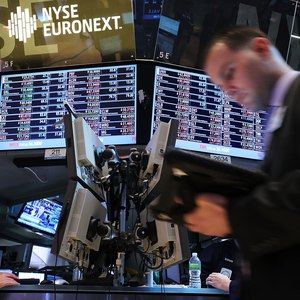
There is no magic percentage that makes a bond or stock a high-yield investment. High yield compared to normal yield is often a relative measurement. You can find out what average or safe yields are for a specific type of investment and then define for yourself what would be high yield relative to the norm.
High Yield Investments
You can find investments that would classify as high yield in both the bond and stock markets. Stocks and bonds sporting well-above-average yields can be bought individually or through managed investments such as mutual funds, exchange-traded funds or closed-end funds. If you are looking for high-yield investment prospects, the world of closed-end funds offers a large number of high-yield funds that invest in a wide range of different types of stocks and bonds. You can use closed-end fund yields as benchmarks to define what high yield means in current market conditions.
High-Yield Bonds Defined
The bond market provides a definition of high-yield bonds compared to the rest of the bond market. Corporate bonds have credit ratings from companies like Standard & Poor's and Moody's. A bond has either an investment grade or noninvestment grade credit rating. Noninvestment grade bonds are commonly called high-yield bonds. The average yield on high-yield bonds can be compared to the average for investment grade bonds to show how much extra investors will earn by going with riskier bonds. Historically, high-yield bonds pay 3 to 4 percent more than investment grade corporate bonds and 4 to 6 percent more than U.S. Treasury bond yields.
Stock Dividend Yields
Defining a high-yield percentage is much more subjective with dividend paying stocks. First, yields can change significantly as stock prices move up and down and as companies raise or lower dividend payment amounts. A starting point to define high yield would be to look at the average yield for stocks and pick a number above the average. In April 2013, the average yield for dividend paying stocks in the S&P 500 was 2.4 percent. A conservative investor may consider a stock paying 4 percent to be high yield, while another investor may put a much higher cutoff on what she considers high yield. A significant number of stocks pay dividends producing yields of 5 percent up into the double digits.
Suggested High-Yield Yields
While the actual yields of what many would consider to be high-yield investments can fluctuate significantly through market cycles, one possible rule of thumb is to add 3 or 4 percent to the yields on safe investments of the same type -- stocks or bonds. So if blue chip stocks are paying about 2.5 percent to investors, high-yield stocks would be those paying more than about 6 percent. In early 2013, Treasury bond yields were near the same level -- 2 to 2.5 percent -- as blue chip stocks, so for bonds, high yield also starts at the 5.5 to 6 percent level.
References
- Bondtools: Bond Spreads
- IndexArb: Dividend Yield for Stocks in the S&P 500
- PIMCO: U.S. High Yield -- A Closer Look at “Junk” Spreads
- Fidelity. ”Benefits of ETFs.” Accessed April 1, 2020.
- Fidelity. “The Drawbacks of ETFs.” Accessed April 1, 2020.
- iShares. "iShares iBoxx $ High Yield Corporate Bond ETF." Accessed May 20, 2020.
- State Street Global Advisors. "SPDR Bloomberg Barclays High Yield Bond ETF." Accessed May 20, 2020.
- Fidelity. ”Snapshot: JNK.” Accessed May 20, 2020.
- Vanguard. "Vanguard High Dividend Yield ETF (VYM)." Accessed May 20, 2020.
- VanEck. "HYD VanEck Vectors High-Yield Municipal Index ETF." Accessed May 20, 2020.
- SS&C Alps Advisors. "Alerian MLP ETF." Accessed May 20, 2020.
- WisdomTree. "Emerging Markets High Dividend Fund." Accessed May 20, 2020.
- U.S. Securities and Exchange Commission. “Investor Bulletin: Real Estate Investment Trusts (REITs),” Page 1. Accessed May 20, 2020.
- State Street Global Advisors. "SPDR Dow Jones International Real Estate ETF." Accessed May 20, 2020.
- First Trust. "First Trust Preferred Securities and Income ETF (FPE)." Accessed May 20, 2020.
- Invesco. "Invesco KBW High Dividend Yield Financial ETF." Accessed May 20, 2020.
- Vanguard. "Vanguard Emerging Markets Government Bond ETF (VWOB)." Accessed May 20, 2020.
Writer Bio
Tim Plaehn has been writing financial, investment and trading articles and blogs since 2007. His work has appeared online at Seeking Alpha, Marketwatch.com and various other websites. Plaehn has a bachelor's degree in mathematics from the U.S. Air Force Academy.

